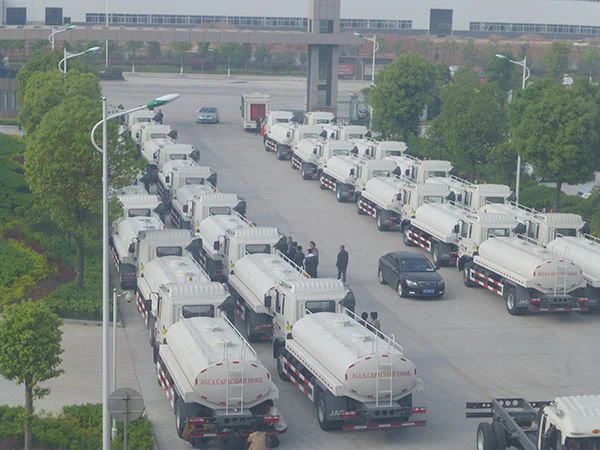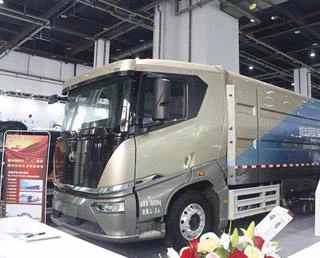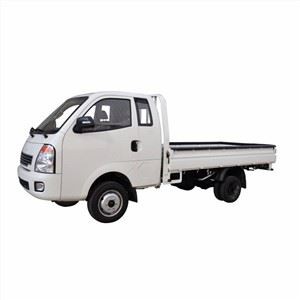How Much Can a Cement Truck Hold? Understanding Capacity and Usage

Cement trucks are essential vehicles in the construction industry, responsible for transporting and delivering ready-mixed concrete from batching plants to construction sites. One of the most common questions asked is, “How much can a cement truck hold?” This article aims to provide a comprehensive overview of cement truck capacities, types, operational considerations, and practical advice for using these vehicles efficiently.
Understanding Cement Truck Capacities
Cement truck capacities can vary significantly based on several factors, including truck type, local regulations, and specific manufacturer specifications. The capacity is typically measured in cubic yards or cubic meters, which directly influences how much concrete can be mixed and delivered in a single trip.
Typical Capacities of Cement Trucks
Most standard cement trucks can hold between 8 to 12 cubic yards of concrete, which translates to about 6 to 9 cubic meters. Below is a table summarizing the capacities based on common truck types.
| Truck Type | Cubic Yards | Cubic Meters |
|---|---|---|
| Standard Mixer Truck | 8 – 10 | 6 – 8 |
| Large Mixer Truck | 10 – 14 | 8 – 10.5 |
| Mini Mixer Truck | 3 – 5 | 2.3 – 3.8 |
Factors Influencing Capacity
- Truck Size: Larger trucks typically have higher capacities.
- Local Regulations: Some areas have weight limits that impact how much can be loaded.
- Mixer Design: Different designs, such as rear-discharge or front-discharge trucks, can affect capacity.
Types of Cement Trucks
Standard Mixer Trucks
Standard mixer trucks are the most common in the construction industry. They usually have mixing drums that can hold between 8 to 12 cubic yards of concrete.
Large Mixer Trucks
Large mixer trucks are designed for more extensive projects and can carry larger loads, typically ranging from 10 to over 14 cubic yards. These trucks are beneficial for large commercial or infrastructure projects.
Mini Mixer Trucks
Mini mixer trucks are smaller and are often used for residential or smaller projects. They usually hold between 3 to 5 cubic yards of concrete, making them ideal for tight spaces where larger trucks cannot access.
Specialized Trucks
In addition to standard and mini trucks, there are also specialized trucks for specific purposes, such as volumetric mixers that can mix dry materials on-site and allow for on-demand concrete delivery.
How to Calculate the Amount of Concrete Needed
When planning a concrete project, knowing the capacity of cement trucks is only part of the equation. You also need to calculate the amount of concrete required for your specific project. Here’s a simple method:
1. Determine the Dimensions of the Area
- Measure Length (L), Width (W), and Depth (D) of the area you need to fill.
- Convert measurements to the same unit (feet, meters, etc.).
2. Use the Formula for Volume
The formula for calculating the volume of concrete is:
Volume = L × W × D
3. Convert Volume to Cubic Yards

If your measurements are in feet, divide the volume by 27 to convert cubic feet to cubic yards.
Example Calculation
If you have a slab that is 10 feet long, 5 feet wide, and 0.5 feet deep:
- Volume = 10 × 5 × 0.5 = 25 cubic feet
- Convert to cubic yards: 25 ÷ 27 ≈ 0.93 cubic yards
In this example, you would need approximately 1 cubic yard of concrete.
Operational Considerations When Using Cement Trucks
Loading and Unloading
Proper loading and unloading of cement trucks are crucial to ensure safety and efficiency. Here are some tips:
- Always ensure the truck is parked on a level surface before loading or unloading.
- Use chutes or conveyor systems for efficient unloading at the construction site.
- Monitor the material visually to avoid overloading.
Time Sensitivity
Concrete begins to set relatively quickly. It is important to plan delivery times effectively.
- Ensure that the site is prepared and accessible when the truck arrives.
- Coordinate with the ready-mix supplier to avoid delays.
Safety Measures
Safety is paramount in any construction operation. Here are key safety measures when dealing with cement trucks:
- Wear appropriate personal protective equipment (PPE), including gloves, goggles, and hard hats.
- Ensure that all personnel are aware of the truck’s operations and surroundings.
Cost Considerations for Using Cement Trucks
The cost of utilizing a cement truck can vary based on several factors:
1. Type of Concrete

Different types of concrete (standard, high-strength, decorative) come with varying costs per cubic yard.
2. Truck Size and Load Capacity
The larger the truck and load capacity, the higher the upfront cost. However, larger loads can mean lower costs per cubic yard if calculated efficiently.
3. Distance from Batching Plant
Transportation costs increase with the distance from the batching plant to the job site.
Example Cost Breakdown
Suppose you are using a standard mixer truck with a capacity of 10 cubic yards:
- Cost of concrete: $100 per cubic yard
- Distance: 10 miles, with a transportation fee of $2 per mile
Total Cost = (10 × $100) + (10 × $2) = $1000 + $20 = $1020
Choosing the Right Cement Truck for Your Project
Selecting the appropriate cement truck for your job is crucial for efficiency and cost-effectiveness. Consider the following:
Project Size
For larger projects, opt for larger trucks that can carry more concrete to reduce the number of trips.
Site Accessibility
Evaluate the construction site for accessibility. Smaller trucks may be necessary for tight spaces.
Concrete Requirements
Different projects may require different types of concrete and, correspondingly, different kinds of trucks.
Environmental Considerations
Using cement trucks also includes environmental implications, especially regarding air and noise pollution. Here are some tips to mitigate negative impacts:
1. Efficient Routing
Plan the routes for cement trucks to reduce travel distance and fuel consumption.
2. Use of Eco-Friendly Concrete Materials
Consider concrete mixes that use recycled materials or by-products. This can sometimes allow for reduced carbon footprints.
3. Minimizing Waste
Ensure accurate estimates of concrete needs to minimize waste from excess pouring.
FAQ Section

How can I find out the exact capacity of a specific cement truck?
You can typically find the exact capacity in the manufacturer’s specifications or by consulting with the rental or purchasing company.
Can I use a cement truck to deliver materials other than concrete?
Standard cement trucks are specifically designed for concrete delivery. For other materials, consider different types of delivery vehicles.
What happens if I overload a cement truck?
Overloading can lead to safety hazards, legal repercussions, and damage to the truck and road surfaces. Always adhere to the specified capacity.
How can I ensure the quality of concrete delivered by cement trucks?
Work with reputable suppliers and verify the mix design before loading. Conduct tests as necessary upon delivery.
Is it possible to get smaller loads than what a truck can hold?
Yes, some suppliers offer a minimum load size, but you may end up paying for the full truckload even if you utilize less than the maximum weight or volume.
What are the average costs for delivering concrete by cement truck?
Costs can vary widely but typically fall between $100 to $150 per cubic yard, plus transportation fees based on distance. Always request quotes based on your specific needs.
